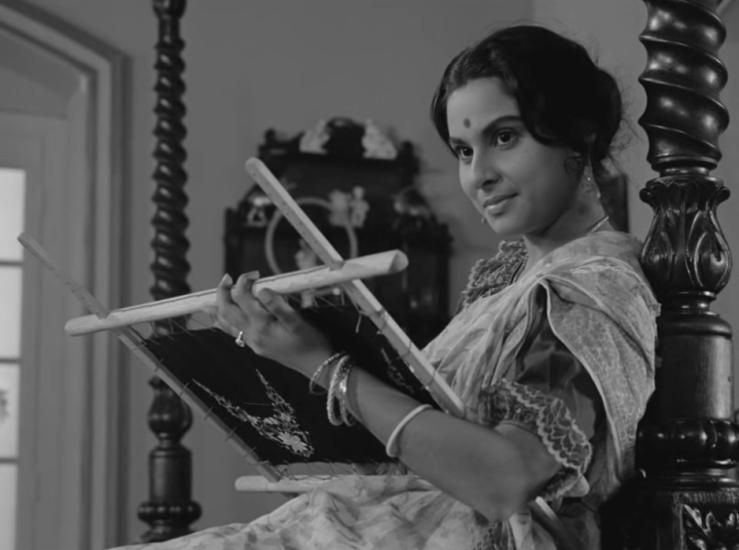Charulata
Satyajit Ray, 1964
Runtime: 117 minutes
Language: Bengali, with some English
Starring: Soumitra Chatterjee, Madhabi Mukherjee, Sailen Mukherjee, Syamal Ghosal

Synopsis from The Criterion Collection:
Satyajit Ray’s exquisite story of a woman’s artistic and romantic yearning takes place in late nineteenth-century, pre-independence India, in the gracious home of a liberal-minded, workaholic newspaper editor and his lonely wife, Charulata (Madhabi Mukherjee). When her husband’s poet cousin (Soumitra Chatterjee) comes to stay with them, Charulata finds herself both creatively inspired and dangerously drawn to him. Based on a novella by the great Rabindranath Tagore, Charulata is a work of subtle textures, a delicate tale of a marriage in jeopardy and a woman taking the first steps toward establishing her own voice.
Lauren: There are a few reasons I wanted this to be the first film we watched together for the blog.
It’s appropriate to kick things off with a work by one of India’s most legendary filmmakers. I also wanted a film that, despite being made by a very famous director, does not yet share the fame or cultural import of a work like Satyajit Ray’s The Apu Trilogy [Pather Panchali (1955), Aparajito (1956) and The World of Apu (1959)].
I also find it appealing that the titular character is a woman. Furthermore, I had seen Charulata once before. I wanted a chance to reflect on my feelings after a second viewing. Especially after gaining new insight from you. There is nuance and context there that isn’t going to be as immediate or obvious to me as it is to you.
You had a very strong reaction to the film.
Gaurav: I did.
For me this is a film about creation. About energy. And how in this world, in this time [ed: late 19th century Calcutta], men and women express it differently and the limits of that.
It’s about space. Space within the home.How these men and women occupy themselves and how they create and add to their environment. And subsequently how they are perceived in these spaces. How Britain views the Indian subject. How men view women and their role in society. And it gets so personal and narrow. In politics. In home. In husband/wife. In family. In poetry/business.
It’s like a Russian doll.
We see things get smaller and more constrained.

Lauren: The film does take on a progressively tighter sensibility as it moves toward its conclusion. Not claustrophobic, but very nearly.
I’m curious how you feel about how the film presents the respective societal roles of Indian men and Indian women. As well as how Indian men and Indian women view each other. Do those values function differently – in the vacuum of the film as a work of pure Indian cinema – from how they might function beyond the scope of Indian cinema?
